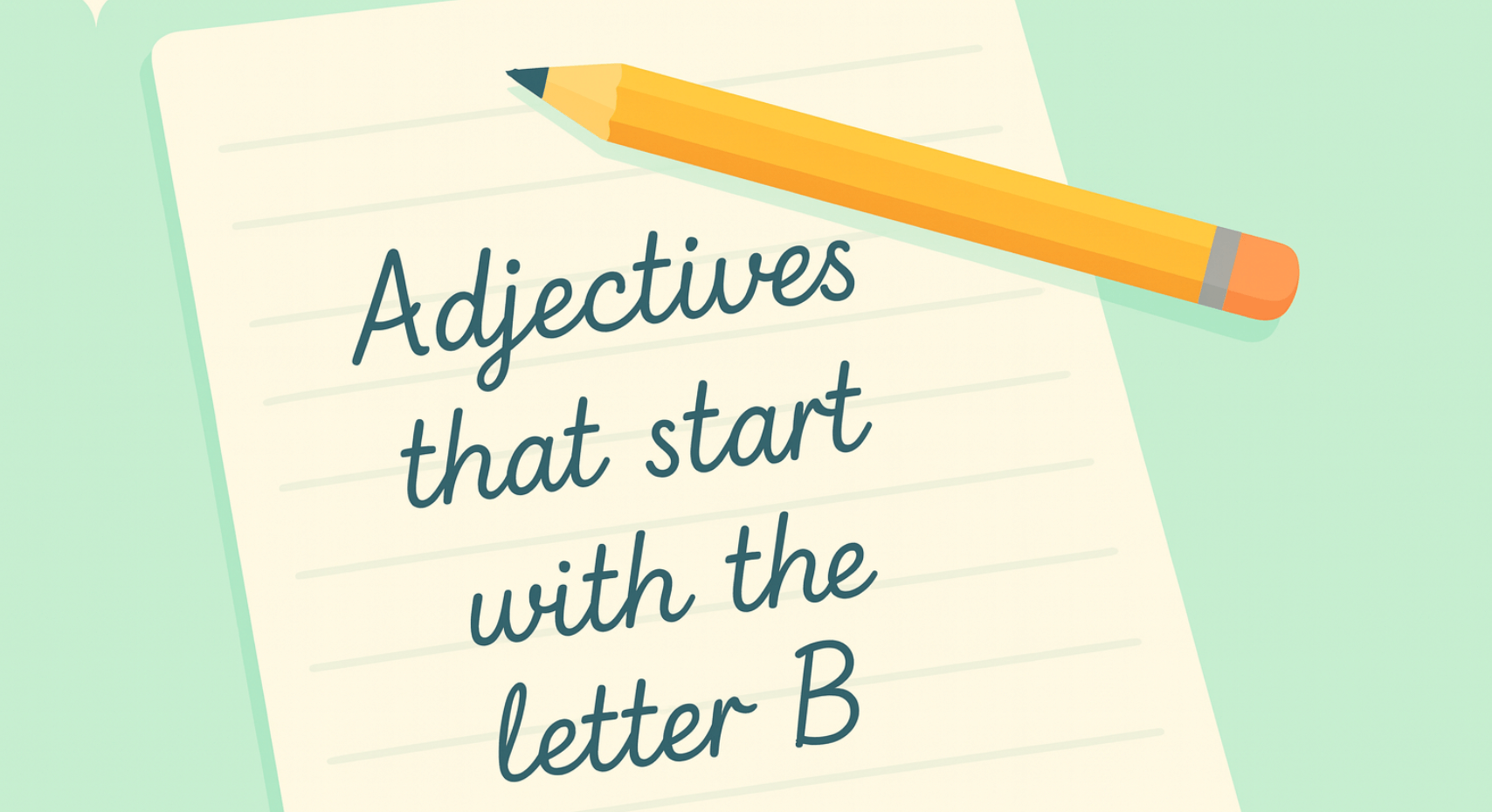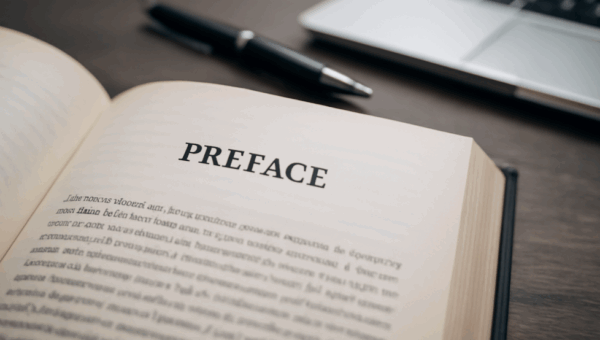Why do some stories stick with us forever, while others fade into the background? The answer often lies in the structure. A well-constructed story isn’t just luck—it’s a formula. And if that formula feels overwhelming, don’t worry—you’re not alone. In fact, a study by the University of Vermont analyzed 1,700 stories and found that most successful narratives follow just six basic emotional arcs. Yes, even your favorite movies likely stick to the script.
Enter Dan Harmon, the creative mind behind Rick and Morty and a storytelling wizard. Harmon took Joseph Campbell’s intricate Hero’s Journey—beloved but notoriously complex—and streamlined it into a tool any writer can use: the Story Circle. Think of it as Campbell’s teachings on a budget, but with all the same transformative power.
So, what exactly is the Story Circle, and how can it make your stories shine? Whether you’re crafting the next big novel, writing TV scripts, or just trying to jazz up your favorite party anecdotes, this guide will show you how to put the Story Circle to work. Buckle up—we’re diving into storytelling gold. And don’t worry, there’s no pop quiz at the end (though we might mention Star Wars a few times).
What is the Dan Harmon Story Circle?
Imagine storytelling as a circle—a shape that always loops back to where it began but with a twist: the character has grown, changed, or transformed. This is the essence of the Dan Harmon Story Circle, a simplified framework for crafting stories that resonate deeply with audiences.
Harmon created the Story Circle as a practical adaptation of Joseph Campbell’s Hero’s Journey, a complex 17-step structure that outlines the universal path of a hero. While Campbell’s work (The Hero with a Thousand Faces) is a masterpiece of mythology, it can feel daunting for writers. Harmon’s approach trims it down to eight essential steps, making it accessible and easy to use for any narrative, whether it’s a novel, screenplay, or even a personal anecdote.
The cyclical nature of the Story Circle reflects life itself. We start in a place of comfort, venture into the unknown, face challenges, and return home, changed. It’s not just about plot—it’s about character development. Harmon once described it as the “story embryo,” emphasizing its flexibility in building narratives of all kinds, from fairy tales to favorite movies like Star Wars and Harry Potter.
At its core, the Story Circle is built on eight stages:
- You – The protagonist starts in a familiar world (their comfort zone).
- Need – They feel a pull toward something more, a desire or goal.
- Go – They leave the familiar and enter an unfamiliar situation.
- Search – They explore this new world and face challenges.
- Find – They discover what they were looking for, but it comes with a price.
- Take – They pay the heavy price and claim their reward.
- Return – They return to the familiar world, changed by their journey.
- Change – The protagonist is no longer the same person—they’ve grown.
This structure is deceptively simple but incredibly versatile, allowing writers to craft stories with more depth and emotional resonance.
In the next section, we’ll break down these eight stages in detail, using examples from popular stories like Harry Potter, Star Wars, and even a few unexpected tales. Ready to see how the magic works? Let’s find out more!
Breaking Down the 8 Steps of the Dan Harmon Story Circle
The Dan Harmon Story Circle is built on eight distinct steps, each representing a critical part of the hero’s journey. Let’s explore these stages with practical examples to see how they bring stories to life.
- You (Familiar World)
The story begins in the protagonist’s ordinary world, a place where they feel safe and comfortable. This stage establishes their current reality and sets the stage for the journey ahead.- Example: In Harry Potter and the Sorcerer’s Stone, Harry lives a dull life in the cupboard under the stairs. His world is mundane and limiting.
- Why it matters: The audience must connect with the character’s starting point to appreciate their transformation.
- Need (Desire to Leave the Comfort Zone)
The hero feels a pull—a desire for change, adventure, or fulfillment. This need creates the tension that drives the story forward.- Example: Luke Skywalker in Star Wars: A New Hope dreams of leaving Tatooine and joining the Rebellion.
- Why it matters: This step introduces the hero’s motivation and hints at the stakes.
- Go (Enter the Unfamiliar Situation)
The protagonist leaves their familiar world and ventures into an unknown environment. This marks the beginning of their transformation.- Example: Harry enters the magical world when he boards the Hogwarts Express.
- Why it matters: This step signifies the leap of faith required to grow and evolve.
- Search (Trials in the New World)
The hero navigates the challenges and obstacles of the unfamiliar situation, testing their resolve and abilities.- Example: In The Hunger Games, Katniss must learn how to survive in the arena, forging alliances and facing danger.
- Why it matters: This phase builds tension and showcases the hero’s resilience.
- Find (Discovering What They Seek)
The hero achieves their goal or finds what they were looking for, but it often comes with a heavy price.- Example: Frodo reaches Mount Doom with the One Ring in The Lord of the Rings, but the journey has taken an immense toll on him.
- Why it matters: The hero’s triumph is bittersweet, adding emotional weight to the story.
- Take (Paying the Price)
The hero must face the consequences of their actions and choices. This stage often includes a significant sacrifice or loss.- Example: In Frozen, Anna sacrifices herself to save Elsa, showing the true power of love.
- Why it matters: This is where the stakes feel real, and the character’s growth is put to the ultimate test.
- Return (Returning to the Familiar World)
The hero returns to their familiar world, but they are forever changed by their journey.- Example: Simba returns to Pride Rock in The Lion King to reclaim his place as king.
- Why it matters: This step highlights the cyclical nature of the story while setting up the resolution.
- Change (Transformation)
The protagonist has evolved—they are no longer the same person who began the journey. This transformation is what gives the story its emotional resonance.- Example: Neo in The Matrix fully embraces his role as “The One,” realizing his true potential.
- Why it matters: This stage closes the loop, leaving the audience satisfied with the hero’s arc.
These eight steps can be applied to nearly any narrative, from epic sagas like Star Wars to small-scale, personal tales. By understanding and mastering this structure, writers can create stories that feel both familiar and fresh, resonating deeply with audiences.
In the next section, we’ll explore how the Dan Harmon Story Circle builds upon Joseph Campbell’s Hero’s Journey and why this simplified approach is so effective.
How the Story Circle Builds on the Hero’s Journey
The Dan Harmon Story Circle didn’t emerge from a vacuum. It’s deeply inspired by Joseph Campbell’s Hero’s Journey, a structure famously outlined in The Hero with a Thousand Faces. While Campbell’s model is rich in detail and symbolism, it can feel overwhelming for writers seeking a practical tool. Harmon’s Story Circle distills these principles into a simplified version that’s easier to use without sacrificing depth.
A Brief Look at the Hero’s Journey
Campbell’s Hero’s Journey describes the universal path that many stories follow, broken into 17 stages across three acts: the Ordinary World, the Special World, and the Return. This structure is seen in countless narratives, from ancient myths to modern blockbusters like Star Wars.
For example, Luke Skywalker’s journey in A New Hope maps neatly to the Hero’s Journey:
- Ordinary World: Luke’s quiet life on Tatooine.
- Call to Adventure: Princess Leia’s message via R2-D2.
- Trials and Allies: Training with Obi-Wan and battling the Empire.
- Return: Destroying the Death Star and embracing his role as a hero.
Harmon’s Simplified Approach
While Campbell’s Hero’s Journey can be intricate, Harmon’s Story Circle boils it down to eight steps, retaining the core elements of transformation and return. Each step corresponds to a key part of the Hero’s Journey but focuses on practical storytelling.
For instance:
- Campbell’s Ordinary World becomes Harmon’s You, emphasizing the character’s starting point in their familiar world.
- The Call to Adventure aligns with Need, where the hero feels the pull to leave their comfort zone.
- The Return with the Elixir, where the hero brings knowledge or transformation back home, corresponds to Change in the Story Circle.
Why the Simplified Approach Works
The Story Circle works because it’s intuitive and adaptable. Harmon’s version focuses on the essential beats of storytelling, making it easier for writers to shape compelling narratives without overloading on theory. This is particularly useful in modern formats like TV series, where pacing is crucial, and in fairy tales, where simplicity is key.
For example:
- In Harry Potter and the Sorcerer’s Stone, the transition from the ordinary world (the Dursleys’ home) to the new world (Hogwarts) is a direct application of the Story Circle’s Go stage.
- Star Wars demonstrates the cyclical nature of storytelling, as Luke’s journey mirrors Campbell’s model but flows seamlessly through Harmon’s eight steps.
A Tool for Every Writer
Harmon’s Story Circle strips away the complexities of Campbell’s work without losing its soul. It bridges the gap between academic theory and practical application, giving writers a tool that works whether they’re drafting a novel, writing a screenplay, or refining their favorite party anecdotes.
In the next section, we’ll dive into why the Dan Harmon Story Circle is so effective for writers today and how it can transform your creative process.
Your Publishing Journey Awaits – Start NowWhy the Story Circle Works for Writers
The Dan Harmon Story Circle isn’t just another storytelling model—it’s a practical, intuitive framework that has transformed the way modern writers approach their craft. Its simplicity and versatility make it effective for everything from epic sagas to everyday storytelling. Here’s why it works so well.
It’s Grounded in Universal Patterns
At its core, the Story Circle taps into the universal narrative structure humans have been drawn to for centuries. Stories like Star Wars and Harry Potter resonate because they reflect the cyclical journey we all experience in life—growth, challenge, transformation, and return. By embracing this cyclical nature, the Story Circle ensures a story feels both familiar and satisfying.
It Focuses on Character Development
The Story Circle isn’t just about what happens—it’s about how the main character evolves. Each step pushes the protagonist to confront their fears, leave their comfort zone, and grow.
- Example: In Frozen, Anna begins in a familiar world (her palace life), but her journey to save Elsa forces her to confront challenges, make sacrifices, and ultimately transform through love.
This focus on character arc keeps stories engaging and relatable, ensuring audiences connect emotionally with the protagonist.
It’s Adaptable to Any Medium
Whether you’re writing a TV series, novel, screenplay, or even plotting a favorite party anecdote, the Story Circle fits seamlessly. Its eight steps provide a clear blueprint that can be scaled up or down depending on the scope of the story.
- Example: Harmon himself uses the Story Circle in every episode of Rick and Morty, crafting tight, engaging narratives that fit the 22-minute format while delivering deep character moments.
It Keeps Writers Focused
One of the biggest challenges for writers is plotting a story that stays cohesive and doesn’t meander. The Story Circle acts as a roadmap, keeping you on track while still allowing for creativity and exploration.
It Encourages Emotional Depth
By emphasizing both the external journey (plot) and the internal journey (character growth), the Story Circle adds layers to a story.
- Example: In The Lion King, Simba’s physical return to Pride Rock mirrors his emotional journey of overcoming guilt and embracing responsibility.
Writers Love It for Its Simplicity
The Story Circle’s straightforwardness is a breath of fresh air compared to more complicated frameworks. It helps writers without overwhelming them, providing a framework that’s easy to grasp yet rich in potential.
Real-World Impact
In a 2018 interview, Harmon described how this tool not only improves storytelling but also helps with personal reflection. “It’s about understanding your own life’s journey,” he said. Writers can apply the same principles of leaving their comfort zone, exploring the unfamiliar, and returning changed to their creative processes.
The Dan Harmon Story Circle isn’t just a model; it’s a storytelling philosophy. It connects writers to the heart of great narratives: characters growing, audiences feeling, and stories staying with us long after they’re told.
Next, we’ll explore how you can apply the Story Circle to your own writing, no matter the genre or medium. Get ready to transform your storytelling!
How to Use the Story Circle in Your Writing
The Dan Harmon Story Circle isn’t just for blockbuster movies or award-winning TV series—it’s a tool you can use for any kind of story. Whether you’re writing a novel, a screenplay, or even brainstorming ideas for a blog, this framework provides a clear path to follow while leaving room for creativity. Here’s how you can apply it to your writing.
1. Start with Your Main Character
Every great story begins with a character the audience can root for. Define their comfortable life—their starting point in the familiar world. Who are they? What’s their situation?
- Example: In Finding Nemo, Marlin’s comfortable life is defined by his overprotective nature and quiet existence in the reef.
Ask yourself: What does your character want? What’s missing from their life? This desire for change will drive their journey forward.
2. Define the Unfamiliar Situation
Identify the moment when your character steps out of their comfort zone and into a new world. This is the Go stage of the Story Circle. It could be a physical journey (a move to a new city, an adventure to save a loved one) or an emotional one (confronting a fear, overcoming trauma).
- Example: In The Hunger Games, Katniss moves from the safety of District 12 to the deadly arena, an unfamiliar situation that tests her survival skills.
3. Plot the Challenges and Rewards
Think about the trials your character will face in the Search phase. What obstacles will make their journey difficult? This is where the character development happens.
- Example: In Shrek, the titular character faces physical challenges (battling knights, dragons) but also emotional ones, like confronting his own insecurities and learning to connect with others.
As they overcome these obstacles, what do they find? This Find stage reveals the object of their journey, whether it’s a physical treasure, an emotional breakthrough, or a life-changing realization.
4. Introduce the Price of Success
In the Take phase, your character pays a heavy price for what they’ve gained. This moment of sacrifice or loss adds emotional depth and keeps the story engaging.
- Example: Frodo in The Lord of the Rings reaches Mount Doom but is so consumed by the power of the ring that he almost can’t let it go.
Ask yourself: What does your character lose or risk in this stage?
5. Show the Return and Transformation
Bring your character back to their familiar world in the Return stage, but show how they’ve changed. The Change phase is where your story’s emotional core comes full circle.
- Example: In The Lion King, Simba returns to Pride Rock not as the scared cub who ran away, but as a confident king ready to reclaim his throne.
What has your character learned? How will they approach life differently now?
Tips for Mastering the Story Circle
- Keep it simple: You don’t have to follow the steps rigidly—use them as a guide to structure your story.
- Focus on the character arc: A story is only as strong as its protagonist’s transformation. Make sure their journey feels genuine and earned.
- Use examples for inspiration: Revisit your favorite movies, books, or TV series and map them onto the Story Circle.
By applying these principles, you can craft stories that are cohesive, compelling, and deeply satisfying. In the next section, we’ll summarize the key takeaways and explore why the Dan Harmon Story Circle remains one of the most effective tools for modern storytellers.
Why the Dan Harmon Story Circle Stands Out?
The Dan Harmon Story Circle isn’t just a storytelling framework; it’s a storytelling revolution. Its simplicity, versatility, and focus on emotional resonance make it one of the most practical tools for writers today. By breaking narratives into eight digestible steps, the Story Circle empowers writers to craft stories that captivate audiences, no matter the medium.
At its heart, the Story Circle works because it’s rooted in universal human experiences. We all recognize the journey from comfort to growth, from fear to transformation. Whether it’s a classic tale like Star Wars or a deeply personal story, the structure reflects the cyclical nature of life itself.
What makes the Story Circle especially powerful is its emphasis on character development. Unlike structures that focus heavily on plot, Harmon’s approach centers the protagonist’s internal and external growth. This dual focus ensures that every story feels meaningful and relatable.
The framework is also incredibly adaptable. From fairy tales to modern TV series, from action-packed blockbusters to intimate character studies, the Story Circle can handle them all. And for writers, it’s not just a tool for storytelling—it’s a guide for understanding the creative process.
So, whether you’re plotting your next big project or just looking for a way to improve your storytelling skills, the Dan Harmon Story Circle is the perfect place to start. Its eight steps will keep you focused, help you avoid common narrative pitfalls, and ensure your story resonates with readers.
Ready to start your own journey? Take the first step. Define your protagonist’s familiar world, and watch as your story unfolds into something extraordinary. The circle always leads you home, but it ensures you’ll never be the same when you get there.
Ready to elevate your writing and storytelling? Whether you’re looking for professional manuscript editing, ghostwriting services, or digital book creation, Spines is here to help bring your ideas to life. Our team of experts specializes in crafting compelling narratives, fine-tuning character arcs, and ensuring your work is polished to perfection.
Contact us today to discuss how we can support your writing journey and help you create your best work yet. Let’s transform your stories into masterpieces.
FAQs – Dan Harmon Story Cycle
Q: What is Dan Harmon’s Story Circle?
Dan Harmon’s Story Circle is a narrative structure tool that breaks a story into eight distinct steps intended to guide the development of a character’s journey. It’s based on Joseph Campbell’s Hero’s Journey but simplified into a circular pattern that ensures a satisfying story arc. This method is used widely in scriptwriting, particularly in TV, to create compelling, balanced narratives.
Q: Who is Dan Harmon?
Dan Harmon is an American writer and producer, best known for creating and producing the TV show “Community” and co-creating the animated series “Rick and Morty.” His story circle model has been influential in screenwriting, helping writers structure their narratives effectively to engage audiences.
Q: What are the 8 steps in the Story Circle?
The 8 steps of Dan Harmon’s Story Circle involve a character’s progression from comfort, into an unfamiliar situation, adapting to it, achieving a goal, and returning changed. The steps are: You, Need, Go, Search, Find, Take, Return, and Change, helping structure the narrative to flow naturally and cohesively.
Q: How do you start a story circle?
To start a story circle, begin by defining your character’s current situation (You) and identifying what they need that pushes them out of their comfort zone (Need). This sets the stage for the character to enter an unfamiliar situation (Go), which propels the narrative forward.
Q: What is the story circle theory?
The story circle theory is a framework used by writers to map out the emotional and narrative journey of their characters. It emphasizes transformation and resolution, ensuring that the character undergoes significant personal growth and change, which is critical for engaging storytelling.
Q: How is the story circle used in the hero’s journey?
In the hero’s journey, the story circle provides a simplified structure that mirrors the classic phases of the hero’s adventure, including departure, initiation, and return. It helps writers focus on the key emotional beats that resonate with the hero’s psychological and moral growth.
Q: What is the difference between the story circle and traditional three-act structure?
The story circle differs from the traditional three-act structure by focusing more on the character’s emotional journey and transformation rather than just plot points. While the three-act structure divides the story into setup, confrontation, and resolution, the story circle emphasizes continuous growth and change in a cyclical pattern.







